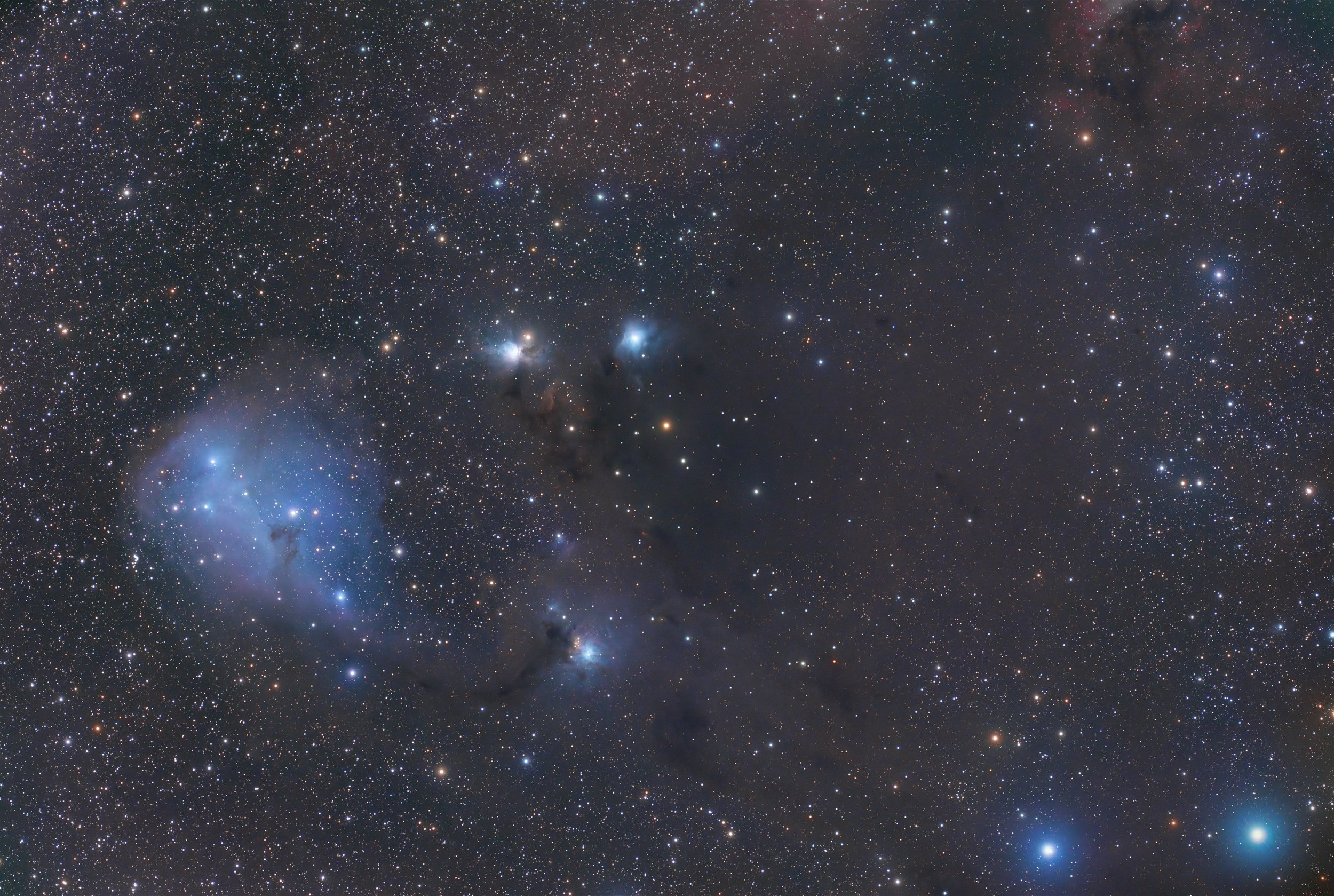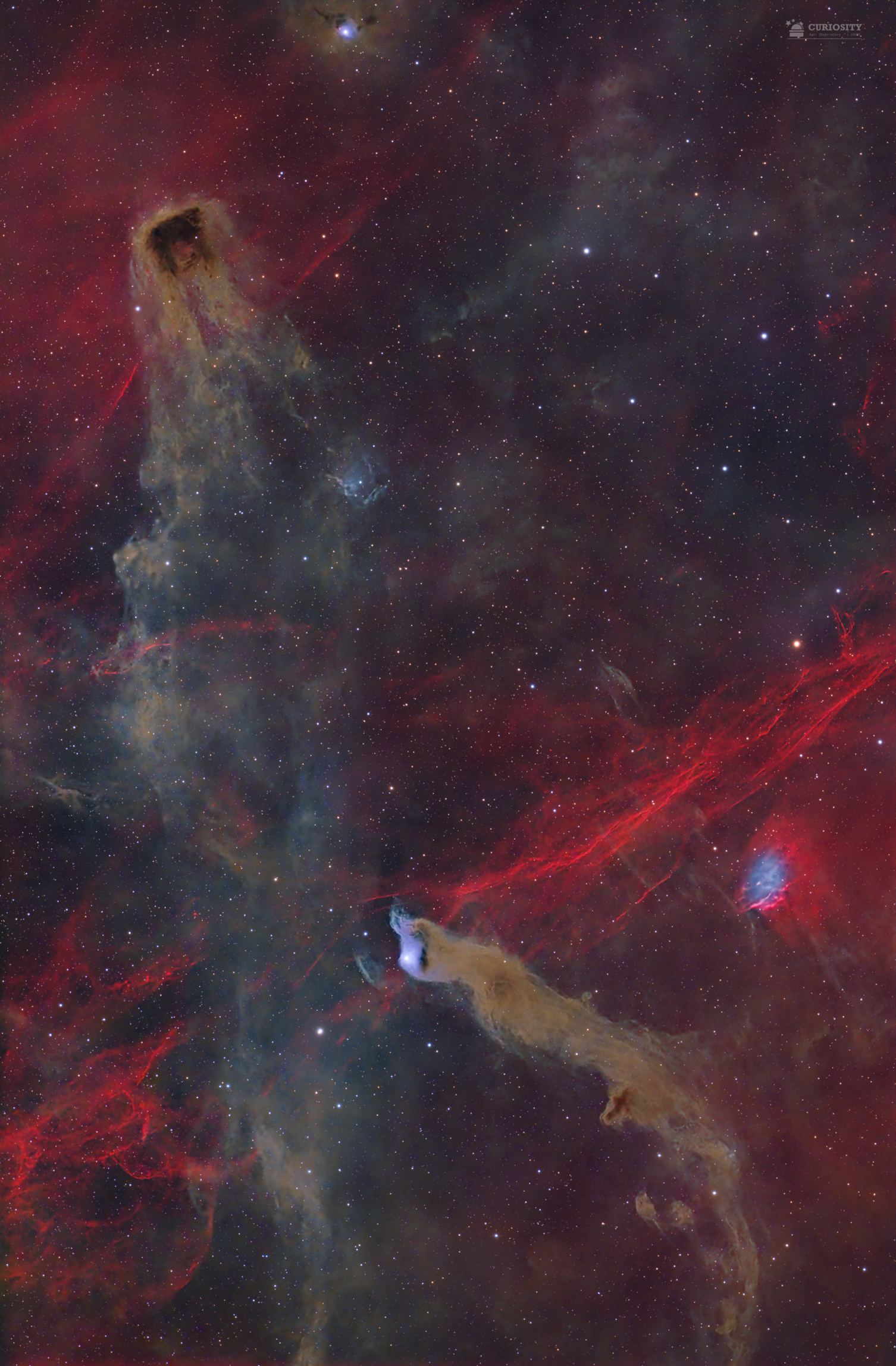
AAPOD2 Image Archives
Echoes of a Stellar Cataclysm: Supernova SNR 206.9+2.3
Nestled within the vast expanse of the Large Magellanic Cloud (LMC), Supernova Remnant SNR 206.9+2.3 stands as a ghostly reminder of a massive star’s violent demise. This delicate yet intricate nebular structure, spanning nearly 130 light-years across, is the expanding shell of gas and dust left behind by a colossal stellar explosion. The supernova that birthed this remnant occurred tens of thousands of years ago, and its shockwave continues to ripple outward, interacting with the surrounding interstellar medium.
Captured through deep imaging using a personal telescope setup, this stunning portrait of SNR 206.9+2.3 reveals its rich and complex composition. Using narrowband filters, the image highlights key elements ejected during the explosion:
Hydrogen-alpha (Hα) in deep reds, tracing vast, glowing filaments of ionized gas.
Oxygen-III (OIII) in striking blues and greens, marking the high-energy zones where the shockwave excites interstellar material.
Sulfur-II (SII) in golden hues, unveiling denser, cooler regions sculpted by turbulence and radiation.
Supernova remnants like SNR 206.9+2.3 play a crucial role in the cosmic cycle, enriching their surroundings with heavy elements—such as oxygen, carbon, and iron—that will eventually become the building blocks of future stars, planets, and even life itself.
This breathtaking image, the result of careful planning and dedicated observation, is a testament to the power of amateur astrophotography in unveiling the hidden wonders of the universe.
The Wolf's Cave and the Toast Nebula
This remarkable region in the constellation Cepheus showcases a tapestry of astrophysical phenomena, where stars and interstellar matter come together to create a scene of cosmic artistry. Each of these designations represents distinct features within a vast complex of gas and dust, woven into the fabric of our galaxy.
VdB 152, also known as Ced 201, is a faint reflection nebula perched at the tip of an elongated dark nebula. It gleams with a ghostly blue hue as it reflects the light from nearby stars, offering a stark contrast to the surrounding inky darkness.
LDN 1221 is part of a dense dark nebula obscuring background starlight, forming intricate, sinuous shapes that add depth and mystery to the region.
LBN 534 and LBN 538 are large, faint emission nebulae that provide the backdrop, glowing faintly in hydrogen-alpha emissions, highlighting the presence of ionized gas.
This area is a rich hunting ground for amateur and professional astronomers alike. The interplay of light and shadow reveals the ongoing processes of star formation, with dark filaments of dust punctuated by the glow of emerging stars. The complex structures speak to the dynamic interactions between gravity, stellar winds, and radiation.
Imaged under the pristine skies of a dark-sky location, this celestial mosaic serves as a reminder of the quiet yet awe-inspiring forces that shape the universe. In Cepheus, beauty and complexity converge in an astronomical masterpiece.



